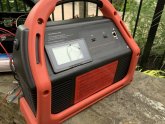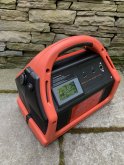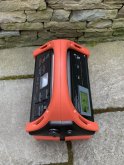Bob142
Build more, learn more.
@svetz made me do it. I took the jump starter re-purpose challenge and started turning my old Duracell Powerpack 600 into a proper power station with solar charging. I still have work to do but wanted to share the progress so far.
It started life with a 26Ah AGM battery, 400W modified sine wave inverter, a wall trickle charger that took over a day to charge it, and no solar capability.

The guts of the upgrade are a 30Ah Amped Outdoors LiFePO4 battery, a 300W Giandel pure sine wave inverter, and a Renogy Wanderer Li 10A PWM SCC. I’m still waiting on a battery monitor.
The notable modifications include:
110W out of a 150W array? I’ll take it. It’s charging almost twice as fast as my Jackery 240s & 500. Boom. (Look away, @MBR! It's a Renogy SCC and it's a PWM. Oh the horror!)


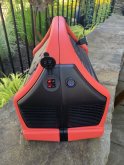
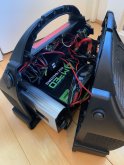
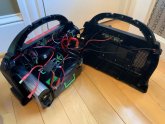
I think I just built @45North's toolbox system in a fancy suit…
To do list:
It started life with a 26Ah AGM battery, 400W modified sine wave inverter, a wall trickle charger that took over a day to charge it, and no solar capability.

The guts of the upgrade are a 30Ah Amped Outdoors LiFePO4 battery, a 300W Giandel pure sine wave inverter, and a Renogy Wanderer Li 10A PWM SCC. I’m still waiting on a battery monitor.
The notable modifications include:
- Cut out some of the internal plastic to make the Amped Outdoors battery fit.
- Hardwired the inverter to the Duracell’s AC outlets and wired it up to the Duracell’s inverter switch (yup, Giandel warranty voided).
- Found a spot to mount the Wanderer and wired the PV input to a panel mount Anderson Powerpole connector. Power to the SCC is controlled by an external switch so it doesn’t draw down the battery when I’m not using the charging function. I used one with an LED so it'd be obvious if I left it on.
- Added an RJ12 panel mount extension so I can have external access to a Renogy BT-1 module (right now the extension is just dangling out of a hole in the side. Good enough for initial testing). Yes, you can use the BT-1 on the little PWMs.
110W out of a 150W array? I’ll take it. It’s charging almost twice as fast as my Jackery 240s & 500. Boom. (Look away, @MBR! It's a Renogy SCC and it's a PWM. Oh the horror!)





I think I just built @45North's toolbox system in a fancy suit…
To do list:
Properly install the RJ12 panel mount.Add a separator between the inverter and battery to force an air gap.Install the battery monitor when it eventually arrives.Reconnect the external Anderson-like connector (it’s disconnected now since it's not needed for the initial testing).Edit: Decided to just disconnect it. I have no use case for it.I’m sure I’ll think of something else.Edit: I didn't.
Last edited:





